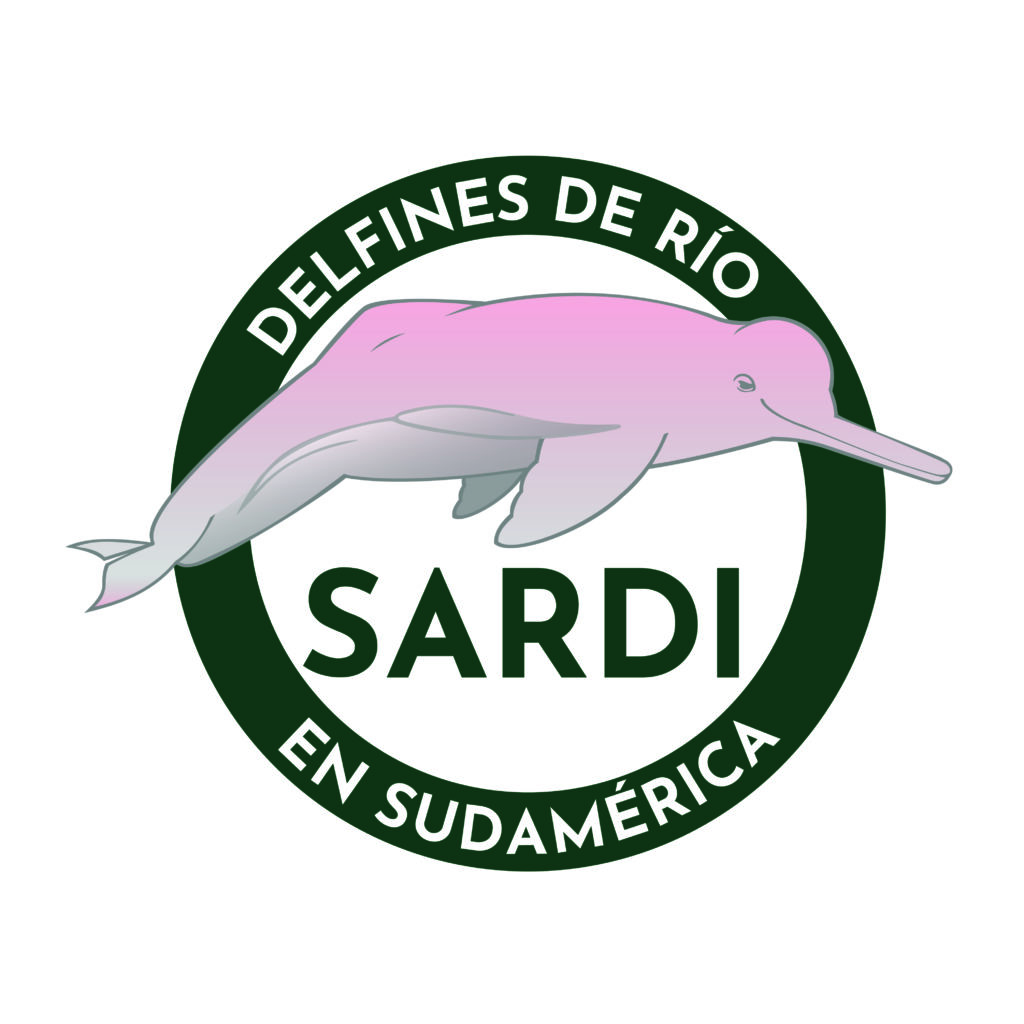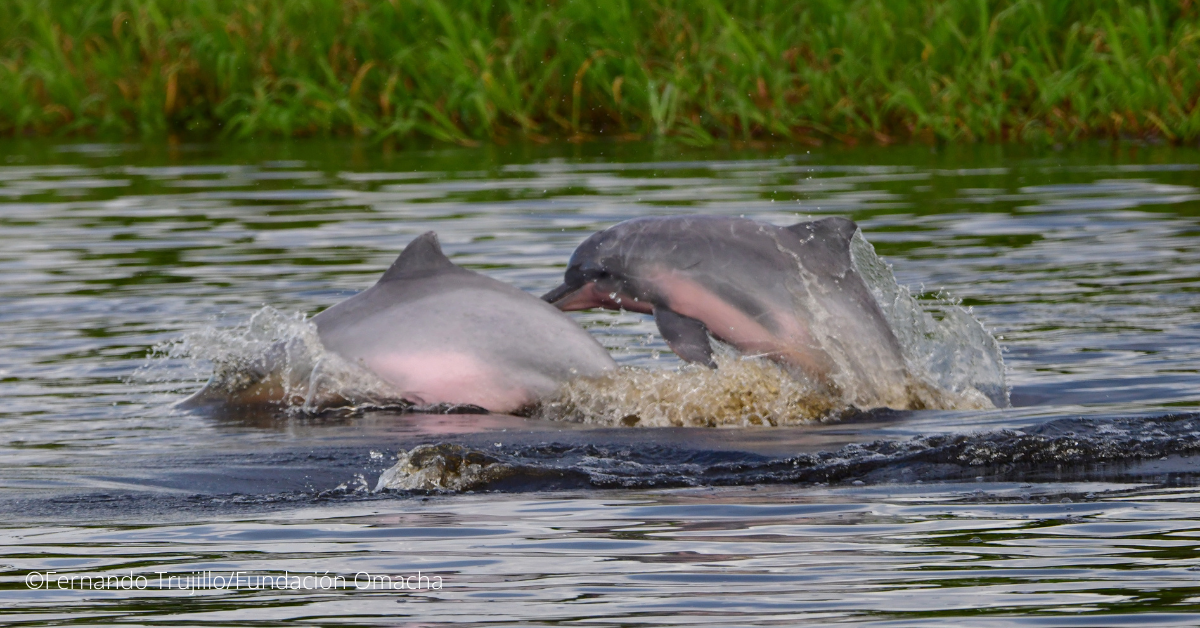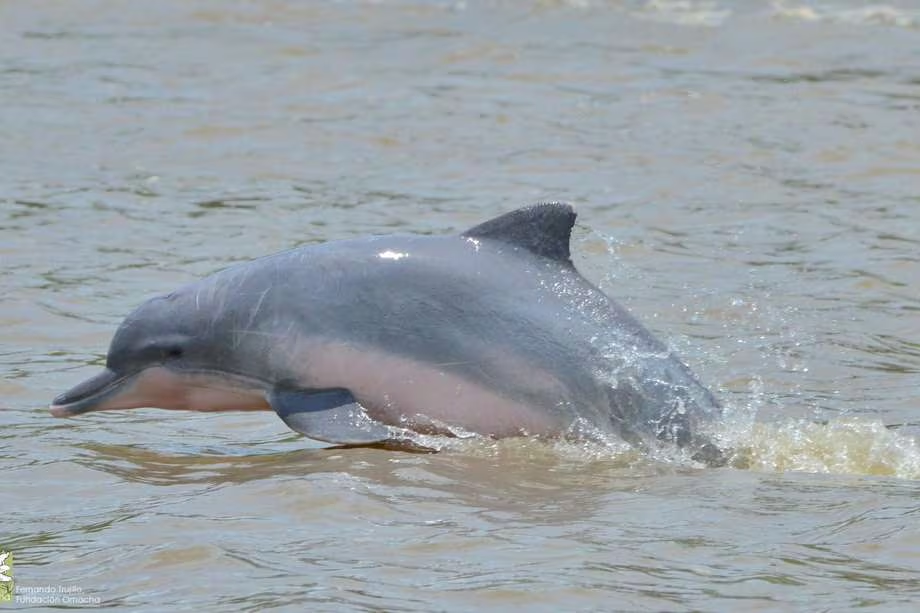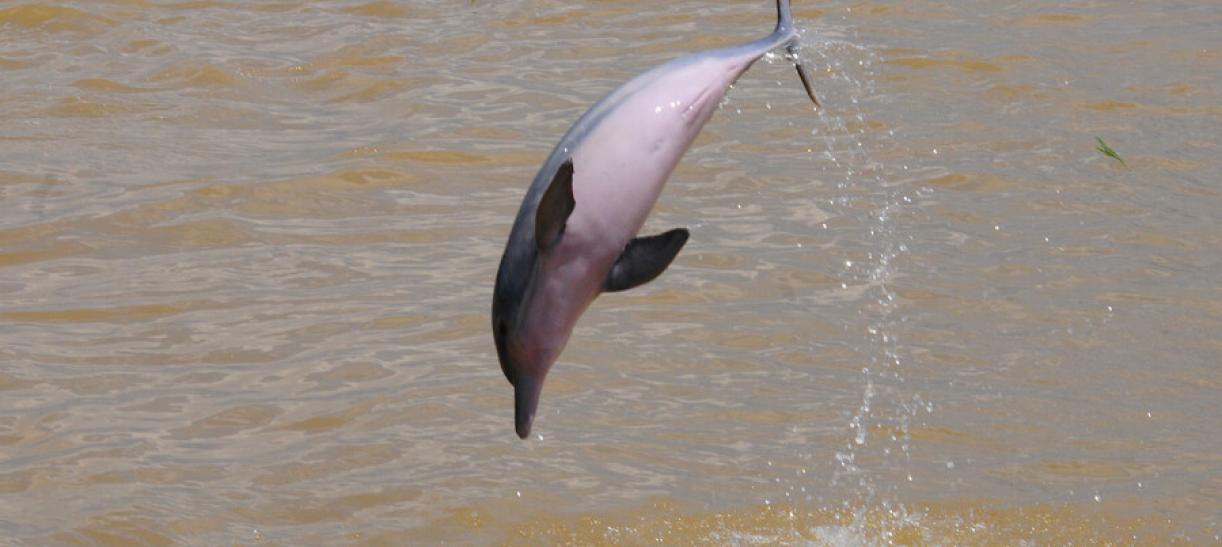- The proposal presented by government commissioners from the four countries was reviewed by the International Whaling Commission last March 22.
- This plan aims to mitigate threats faced by river dolphins in the region and is a major milestone for the group of NGOs that make up the South American River Dolphin Initiative (SARDI).
Still in 2020, the development of the Conservation Management Plan (CMP) for river dolphins in the Amazon, Orinoco, Tocantins and Araguaia river basins will continue. This is a result of the coordinated effort a team of professionals from Brazil, Colombia, Ecuador and Peru, including government commissioners, scientists, and technicians with extensive experience in the conservation of these cetaceans.
This significant regional step towards the conservation of river dolphins is the result of the endorsement by the Scientific Committee of the International Whaling Commission (IWC) to the CMP proposal, presented by the four countries last May 22. The IWC is the most prominent international scientific body in charge of regulations related to cetaceans.
River dolphins face a myriad of threats, including bycatch and mortality in fishing nets, directed hunting, habitat loss, pollution, climate change impacts, and noise disturbances, explained Andrea Ramírez, director of Marine and Coastal Affairs and Aquatic Resources of the Ministry of Environment from Colombia. Ms Ramírez presented the proposal before the Committee and highlighted the support received by civil society organizations from the four countries that integrate the South American River Dolphins Initiative (SARDI).
The endorsement of the CMP by the IWC scientific commission is a major milestone for SARDI, an initiative made up of Faunagua, Fundación Omacha, Mamirauá Institute, Prodelphinus, Solinia, WWF and other organizations. This Initiative has conducted extensive work including the estimation of abundance and satellite monitoring of river dolphins in Brazil, Bolivia, Colombia, Ecuador and Peru. SARDI has called attention to the danger of threats such as construction of hydroelectric dams, which affect river connectivity and, therefore, dolphin movements. The results of these studies were key to developing the CMP, which was acknowledged by the IWC scientific committee as a truly regional cooperation.
Fernando Trujillo, director of the Omacha Foundation and member of the IWC Scientific Committee said that the CMP comes at an important moment: a year ago the International Union for Conservation of Nature (IUCN) recategorized the Amazon river dolphin as Endangered, which highlights the urgency to implement actions for its conservation.
Trujillo added the importance of political and legislative coordination to be achieved between the four countries, promoting joint actions that allow counteracting factors that threaten the survival of these species, such as mercury contamination, deforestation and the loss of river connectivity.
“It is quite remarkable that, in times of pandemic, four countries kept working together and articulated actions to ensure the survival of river dolphins on the continent, since plans to involve partners in Bolivia and Venezuela will be implemented as well, “said Saulo Usma, WWF-Colombia Freshwater Specialist.
This proposal is expected to move quickly through the development process so that the implementation phase can begin before the end of 2020. This CMP represents a great challenge since the geographical area where it will be implemented corresponds to three hydrographic basins with approximately 9 million square kilometers.
Concern about illegal trade of piracatinga in the region
SARDI members and other scientific organizations presented an update on the status of piracatinga fisheries in the region to the Small Cetacean sub-committee of the IWC. The trade in this species, known as piracatinga (in Brazil), mota (in Peru, Colombia), or blanquillo (in Bolivia), exerts pressure on river dolphins, since cetaceans may be captured to be used as bait in that fishery.
“There is evidence that piracatinga are being illegally moved towards Colombia. The National Aquaculture and Fisheries Authority has already made several seizures, around 1,500 kilos, so far this year in the border area“, explained Fernando Trujillo. The scientist also added that in Peru there is evidence of the capture of piracatinga using dolphin meat, as well as in Bolivia and Venezuela (in the Orinoco river).
The piracatinga fishing and marketing moratorium in Brazil, to prevent the killing of freshwater dolphins, ended in January of this year. Recently, it was reestablished by one year, beginning this 1st July 2020. In addition, Colombia maintains a ban on piracatinga trade, notably because high levels of mercury contamination in these fish.
Therefore, one of the Committee’s conclusions is that efforts should be made by all governments to align regulatory border strategies to limit trade of piracatinga, reducing potential impact on river dolphin populations. Likewise, the recommendations made relative to the piracatinga fishery are aligned with the river dolphin CMP presented by the four south American governments.
Next steps include improving the CMP itself with the support from an IWC Intersessional Correspondence Group, a series of regional meetings and the engagement of local communities to make sure their perspectives are included in the final document. For the next months a joint effort, coordinated by country commissioners from the four governments with the support from SARDI and other institutions, will develop a process to improve the CMP document.






